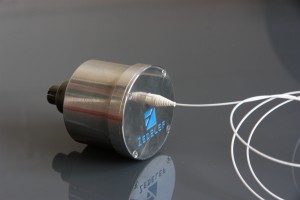Zedelef’s optical transducers enable a vast number of standard sensors – e.g. flow meters, pressure meter, gas detectors, etc. – to be read and multiplexed optically over long distances (> km) or large areas (> km2), thus supporting optical sensing networks in many industrial and/or environmental contexts. Furthermore, these transducers can be used in intrinsically safe environments e.g. in the presence of flammable or explosive atmospheres or in the presence of strong electro- magnetic fields. Potential fields of application include
- mine monitoring
- ocean monitoring (towed array sonars)
- oil & gas distribution monitoring
- smart grid sensors
- perimeter security (intrusion detection)
- and irrigation systems
Advantages
Irrespective of the specific field of application, Zedelef technology applies particularly in the following context:
- Distributed sensing: When monitoring must be done over large areas (over square kilometres) e.g. in the context of pipeline monitoring, electricity distributions, mining exploration, etc.
- Passive devices: In certain circumstances, our optical sensors are entirely passive, i.e. they do not require any power sources. For example, when used as voltage meter for high-power lines, the sensors – potentially distributed over many kilometres – require no power source and thus minimal maintenance (no battery replacement).
- Large sensor networks: Ocean surveillance, perimeter security, seismic surveying all require large number of sensors distributed over large areas. Our technology which relies on low-cost sensors and their ease to multiplex offers clear advantages over their electronics counterparts as the size of the network increases.
- Volatile atmosphere: In the presence of flammable or explosive atmospheres, it is generally not possible to use electronic monitoring. Our sensors can thus be used to monitor flow of natural gas and oil or for seismic monitoring in mines due to the presence of flammable methane gas or coal particulates.
- High data throughput: Distributed sensing can in a number of conditions be done wirelessly with a strong impact on throughput. Optical sensors, leveraging the capabilities of optical fibres can provided an almost unlimited bandwidth and therefore enable real-time monitoring at high sampling rates which is fundamental for certain application (e.g. distributed sonars, fault analysis in power distribution, etc.).
- Analogue transduction: In many sensing applications, analogue signals with the appropriate dynamic range are required.

